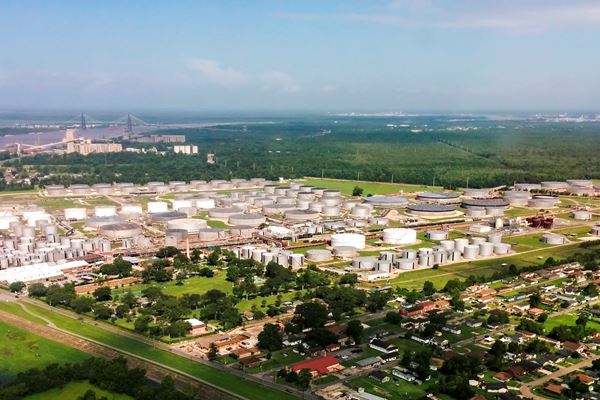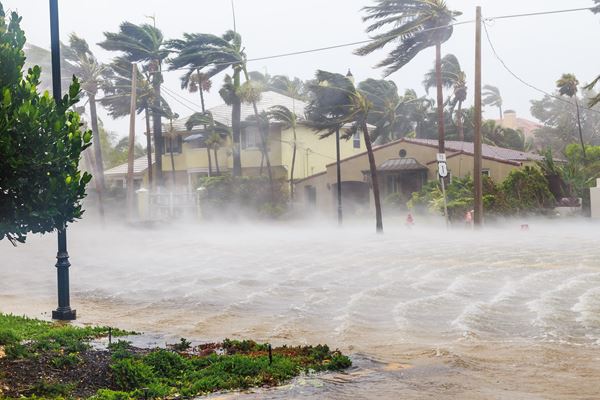Hurricane Headache: Impact on Information Technology Equipment During a Hurricane

This blog details the operational effects posed to IT equipment during a hurricane, which ties in with our four-part blog on Operations Shut Down during COVID-19.
Hurricanes are devastating as they cause chaos in our daily lives and displace many workers while interrupting businesses. Hurricane winds can cause structural damage, heavy rain can cause contamination, and the lesser-known but often the worst of the hurricane perils is power loss. A power loss is an abrupt and or momentary loss of power which can cause key infrastructure to power off without doing so properly. Let’s discuss the impact and prevention methods for these types of losses.
The Importance of Data
Businesses utilize data to transform sales, keep track of customers, and conduct everyday business. Data is one of a company’s most important assets and therefore should be protected as such. The data is stored on servers, storage arrays, computers, and other network devices. This equipment can be stored onsite or hosted by a vendor in a cloud-based infrastructure. Business data may be backed up locally, offsite, or not backed up at all. Data backups are vital to maintaining business operations and often are not being checked and restored frequently to verify the needed data is usable or even being backed up at all. All IT equipment, including backups, can and will fail. It is important to have a strategy to overcome IT equipment and data loss.
Impact on Data
During the hurricane, evacuations are fairly common; however, businesses often keep IT equipment powered on to allow for continued business operation. This is a huge risk without mitigation, as equipment can be exposed to multiple perils. Unfortunately, during a hurricane, nature is no friend, as winds can lead to building damages often causing water contamination. The structural damage can result in collapses, which could directly damage equipment. Water intrusion from rain, pipe ruptures, and commonly, flooding can cause contamination and even total failure of the infrastructure needed to maintain business operations.
Additionally, it is common for power to be lost for an extended period of time during a hurricane and multiple power loss/restoration events can occur until the power becomes stable. These power losses caused by the hurricane can render IT equipment inoperable. For servers, storage devices, and other network devices, these power losses will cause an abrupt loss of power to this equipment without sufficient preparation. A power loss for IT equipment results in a non-graceful shutdown, which can cause software, data, and configuration corruption. Corruption is not physical damage, but rather logical in nature. This corruption can often be overcome by reinstalling software, backups, and reconfiguring the equipment. Unfortunately, IT equipment has software that is onboard internal components that may not be readily restorable and replacement of components may be necessary. A power loss can also reveal worn components. Rebooting equipment, verifying operation, ensuring backups are working as designed, or performing preventative maintenance prior to the hurricane is a wise step to prevent failures and loss of important data.
What Can We Do to Prepare for a Hurricane?
If there is not sufficient infrastructure to protect IT equipment, backing up the data and powering the equipment off properly prior to the hurricane is suggested. If there is sufficient infrastructure, such as battery backups for critical IT infrastructure, also known as Uninterruptible Power Supplies (UPS) and a backup generator, vital equipment can be supplied power during interruptions in utility power via battery backups and generators. It is important to complete proper maintenance of the equipment, such as UPS batteries, which should be replaced every 3 to 5 years, verifying a generator is operational and has sufficient fuel as well as performing maintenance to the building. These items and steps can often prevent an abrupt loss of power, failure of equipment, and loss of data.
Performing maintenance on roofs and securing key areas from water intrusion can also assist with prevention but having IT equipment located well off the main floor and away from water piping, even on floors above, helps keep the infrastructure intact and lessens the risk of water contamination.
It is common during a hurricane for IT equipment claims to come in well after structure damage and flooding to buildings. While dealing with survival, staff might not readily notice that a server is offline, or communications/sales have ceased. The building itself is the first thing noticed and resulting damage from the hurricane.
Regardless of the peril, it is imperative that vital company data is verified to be on a known reliable backup and stored offsite in a secure location. Multiple backups are recommended, which can span the previous day, week, month, quarter, etc. These backups again should be tested and verified by restoring the backup to check data is available and can be accessed via opening files after a restore process completes. Prior to a hurricane, verifying data is viable can provide further peace of mind. A safety deposit box, cloud storage in another state, or even another company location can ensure that this vital asset is protected and available should disaster strike.
Envista can assist with completing a review of any type of loss, providing the cause, assist with a cost review, data restoration cost, and even data recreation costs if needed to restore clients to a pre-loss condition.
Nuestros consultores están listos para ayudar.




